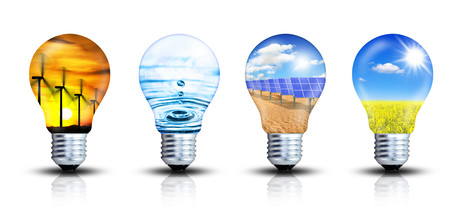Labor's energy policy offers $2000 battery rebates

The Labor Government will offer 100,000 households on annual incomes of less than $180,000 a rebate of up to $2000 to install residential battery systems as part of its new energy policy. The Household Battery Program is part of its plan to reach a new national target of 1 million battery storage systems in Australia by 2025.
According to Bill Shorten, the ‘Plan for More Renewable Energy and Cheaper Power’ will help deliver cheaper, more reliable power for all Australians and encourage investment in renewable energy generation and storage.
The plan centres around three key areas: doubling the original investment in the Clean Energy Finance Corporation (CEFC); creating an independent Energy Security and Modernisation Fund; and implementing a new Energy Productivity Agenda.
Firstly, Labor will provide an additional $10 billion in capital for the CEFC over five years from 2019–20 to support large-scale energy generation and storage projects, provide solar battery rebates and boost investment in energy efficiency projects.
Smart Energy Council supports the new national target, with CEO John Grimes stating: “Detailed analysis undertaken by the Smart Energy Council has shown that Australia could install 450,000 battery storage systems by 2020.
“With battery prices falling and electric vehicle battery manufacturing powering ahead, 1 million batteries by 2025 is achievable.”
Labor will also invest $5 billion to support projects aligned with those identified by the Australian Energy Market Operator (AEMO) in its Integrated System Plan (ISP). The Energy Security and Modernisation Fund will provide transmission links to Renewable Energy Zones across the country and help manage the transition to more renewables in Australia’s energy system.
Energy Networks Australia welcomed the commitment to supporting new electricity transmission development. CEO Andrew Dillon said: “Around the world, we are seeing a move to greater connection between generation sources and customers as grids modernise to integrate more variable renewable generation.
“Australia needs better connection between regions and across states so energy can be more efficiently moved around the national system. A key benefit of this is more competition in wholesale markets, which means downward pressure on prices for customers.”
Finally, Labor highlighted Australia’s poor ranking compared to other developed countries in energy efficiency policy and performance, according to the International Energy Agency. As a result, it has suggested a number of measures to help Australian businesses improve their energy efficiency and cut their power bills, including 1000 grants of up to $20,000 to Australian manufacturers and improving state and territory energy efficiency initiatives through COAG.
Concerns about pricing
Although the plan is a step towards delivering its commitment of 50% renewable energy by 2030, some have expressed concerns about power prices.
Patrick Matweew, CEO of solar and battery storage company Redback Technologies, described the battery rebates as a “win-win situation for government and consumers”. He said subsidies and government loans are the most effective way to encourage the mass-uptake of renewable energy generation.
“A combination of loans and subsidies are already giving residents in South Australia and Queensland the chance to produce and store their own energy. Offering subsidies at a federal level, such as state governments have done in the past, will encourage more Australians to take control of their own energy consumption and generation, and reduce reliance on coal.
With smart, connected battery systems, excess electricity can be stored and used when needed. This takes stress off grid infrastructure, helps stabilise power supply and the grid in the form of demand response functions.”
However, Dillon said there needs to be a transition to smarter power pricing if there are more household batteries. He warned: “Batteries could make things worse if we haven’t got incentives to encourage people to save money by using less power at peak times. Fairer electricity pricing is the key.”
The Australian Council of Social Service (ACOSS) also said the ALP’s commitment to faster clean energy transition is “a step in the right direction”, but criticised the lack of focus on supporting low-income earners who struggle with high energy bills.
In his speech announcing the plan, Shorten said electricity prices have increased by nearly 19% over the past three years, and the Smart Energy Council estimates that new household solar and batteries would allow most homes to save more than 60% off their power bills.
But those on low incomes spend a much larger proportion of their income on energy bills than others, and more needs to be done to address their struggles, according to ACOSS CEO Cassandra Goldie.
“People on low incomes, who cannot afford energy efficiency upgrades or to invest in solar and batteries, are unlikely to benefit from measures such as the $200 million battery subsidy, as currently proposed. Yet it is people on the lowest incomes who face the greatest financial stress from rising power bills. The lowest-income households spend on average 6.4% of their income on energy, up from 5.6% in 2008, compared to middle-income who spend on average 2.8%, up from 2.7% in 2008,” she said.
“The battery rebates should be redesigned to target low-income households, including by direct investment in upgrades to social and community housing.”
She also said, “Additional investment in the CEFC and ARENA should include programs targeted at low-income households and communities and accelerate existing social housing and Aboriginal and Torres Strait Islander community programs.”
Overall, Shorten said the Plan for More Renewable Energy and Cheaper Power aims to “make our nation a veritable powerhouse for the new jobs, the new industries and new investment driven by renewable, cleaner power”.
Tackling energy insecurity in remote communities
Researchers from Flinders and Macquarie Universities have presented the benefits of community-led...
Paper-thin LEDs that are kinder to the eye
A new, experimental LED is nearly as thin as paper and emits a warm, sun-like glow.
How clear windows can harvest energy
Researchers have created a colourless solar concentrator that can be directly coated onto...



